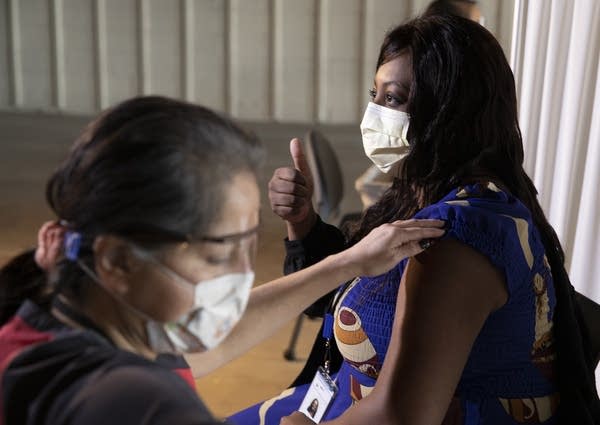Jan. 22 update on COVID-19 in MN: 21 deaths; trends hopeful, but vaccinations flat

Ann Nyakundi, CEO of United Family Medicine, gives a thumbs up after receiving a COVID-19 vaccination on Wednesday. The St. Paul community health center began administering its first shipment of COVID-19 vaccines to their patients who are aged 65 and older.
Christine T. Nguyen | MPR News
Go Deeper.
Create an account or log in to save stories.
Like this?
Thanks for liking this story! We have added it to a list of your favorite stories.


